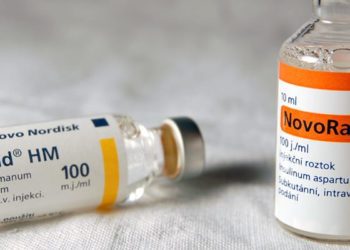Tissue oxygenation and haemodynamic monitoring does not augment postoperative monitoring in adults with coronary bypass
1. In this randomized clinical trial, the use of near-infrared spectroscopy and hemodynamic monitoring did not provide additional benefits in reducing postoperative complications in adults undergoing off-pump coronary artery bypass grafting (CABG).
Evidence Rating Level: 1 (Excellent)
Cardiac surgery complications are serious and often occur with more than one presenting at a time. Some complications include cardiac issues, postoperative delirium, cognitive decline, and acute kidney injury, among others. One factor that contributes to these complications is organ and tissue hypoperfusion. This study tested if perioperative care guided by cerebral (SctO2) and somatic (SstO2) tissue oxygen saturation combined with hemodynamic monitoring reduced the incidence of postoperative compilations in patients undergoing off-pump coronary artery bypass grafting (CABG). The eligibility criteria included being 60 years of age or older and having a scheduled time for an elective off-pump CABG. During the surgery, the hemodynamic parameters of each patient were monitored. The primary outcome consisted of any serious complications occurring within 30 days postoperatively. While secondary outcomes included the individual components of the primary outcome, the occurrence of atrial fibrillation 30 days post-operatively, and the length of stay in the hospital. The participants were equally randomized to receive either guided or standard perioperative care. After being deemed eligible, 1960 individuals were included in the study. Among these, 967 participants received the guided care, while 974 received the usual care. During surgery, patients in the guided care group spend significantly less time with tissue oxygen saturation levels outside ±10% of their baseline for left forehead (32.4 vs. 57.6, P<0.001), right forehead (37.9 vs. 62.6, P<0.001), and forearm (14.8 vs 44.7, P<0.001), compared with the usual care group. A total of 47.3% (457 of 967) of patients in the guided care group and 47.8% (466 of 974) of patients in the usual care group had primary complications (unadjusted risk ratio 0.99 [95% CI 0.90 to 1.08] P=0.83). The secondary outcome with the greatest difference between the two groups was pneumonia, which occurred in 9.1% (88 of 967) and 12.4% (121 of 974) of patients in the guided versus usual care group, respectively. In summary, including multisite tissue oxygenation to standard perioperative care protocols does not provide additional benefit for patients undergoing off-pump CABG.
Click to read the study in BMJ
Image: PD
©2025 2 Minute Medicine, Inc. All rights reserved. No works may be reproduced without expressed written consent from 2 Minute Medicine, Inc. Inquire about licensing here. No article should be construed as medical advice and is not intended as such by the authors or by 2 Minute Medicine, Inc.







